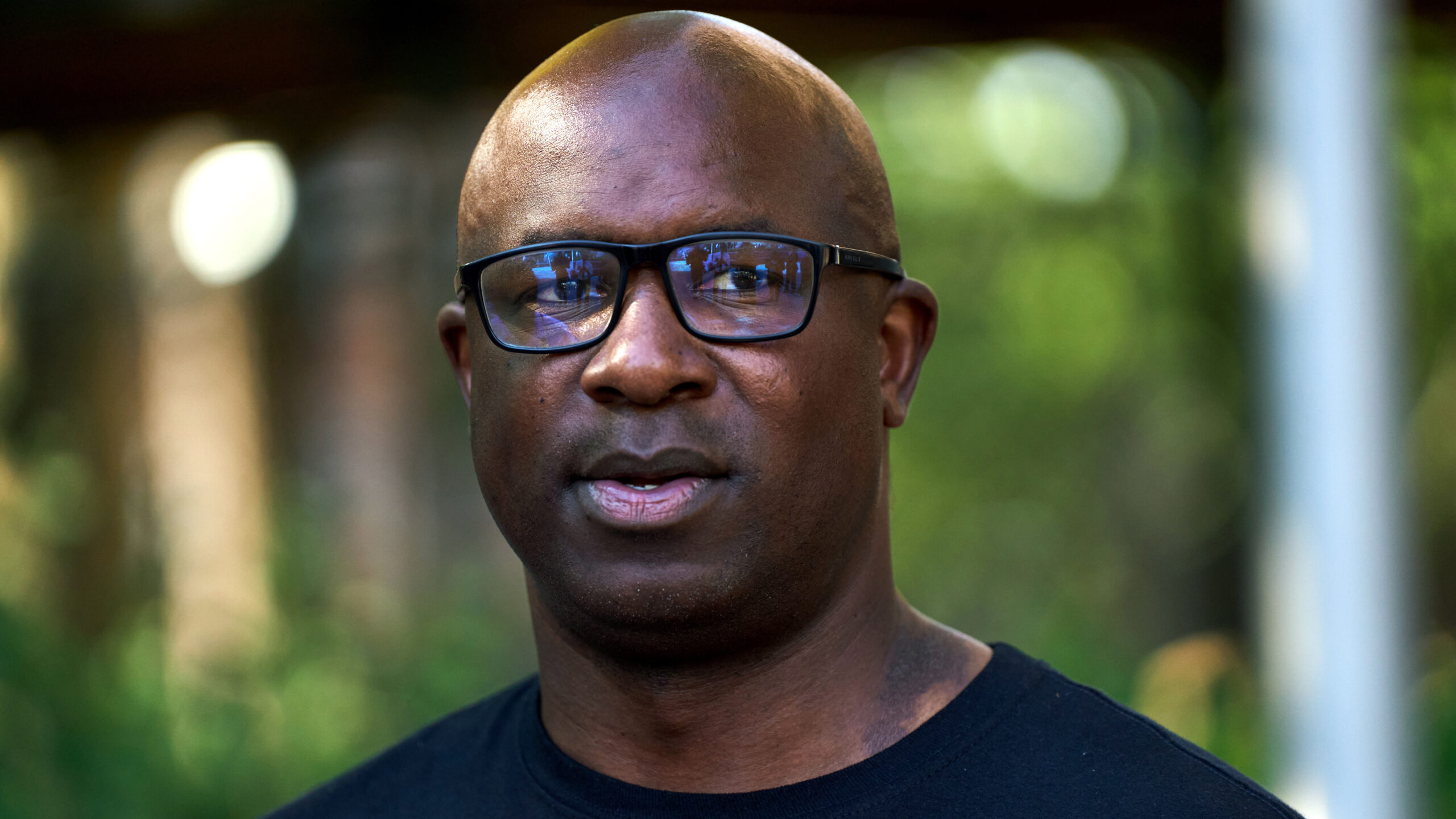'Junk DNA' is bunk! Why the human genome argues for intelligent design
In my quest to learn the ins and outs of the orthodoxy of evolutionary theory (and therefore bring to light its deficiencies), I discovered geologist and lawyer Dr. Casey Luskin, associate director of the Center for Science and Culture at the Discovery Institute. A proponent, researcher, and advocate for intelligent design, Dr. Luskin has been defending academic freedom for scientists who face discrimination because of their support for ID for nearly 20 years. Life is very low entropy, meaning it’s very ordered, and yet it’s also very high energy. How exactly does life maintain this seemingly contradictory state? I’ve written about it here before, but I shared with Dr. Luskin my personal skepticism concerning the religion of evolution. As a layman (relative to him), it seemed to me as if Evolution™ had an “invisible hand of God” problem that’s never been seriously addressed. Meet me in the middle The mythology of Evolution™ seems to have a beginning (the Big Bang), an end (modern Homo sapiens), but no middle. And as I came to understand from my conversation with Dr. Luskin, much of the evidence for evolutionary theory amounts to flimsy, tenuously linked assumptions on the verge of being disproved in various fields. We began by discussing one of the more popular arguments against intelligent design: the concept of “junk DNA." The argument goes something like this: If everything is intelligently designed, then why does the vast majority of our DNA seem to serve no purpose? As Dr. Luskin explained, the idea originated in the early 1960s, when scientists mapped out the molecular protein production process: DNA encodes RNA, which then carries that information to ribosomes, which in turn use it to assemble chains of amino acids into proteins. Because so much of the DNA that had been studied up to that point did not seem to be doing that, it was tossed in the proverbial junk bin, hence the name. Selfish genes The idea really took off with the publications of Japanese geneticist Susumu Ohno’s “So Much Junk DNA in Our Genome” in 1972 and Richard Dawkins’ “The Selfish Gene" in 1976. Ohno famously asserted that 90% of our DNA was total nonsense. Dawkins piggybacked off that and gave the junk DNA a “purpose,” saying that the only true function of the gene was to replicate itself. Whether or not the gene helps you is of non-substance. Luskin was one of the first to push back against this idea. As an undergraduate at the University of California, San Diego, he experienced firsthand how the "junk DNA" theory was used to dismiss the burgeoning ID movement. Luskin would argue with his professors and peers that it was still premature to conclude that most of our DNA could be classified as “junk,” citing the unfinished-at-the-time Human Genome Project as evidence for the lack of evidence. Luskin seems to have been onto something. In the past few years, the “junk DNA” theory has slowly unraveled. God don't make no 'junk' This is in large part thanks to a groundbreaking series of papers entitled the ENCODE Project, published by biologists studying “non-coding” DNA — the goal being to uncover the mysteries of the human genome. Since the ENCODE Project began in 2010, it has found that at least 80% of the genome has shown evidence of biochemical functionality. In other words — contrary to junk DNA theory — this DNA is transcribing information into the RNA. And as for the other 20%? The lead researchers of the ENCODE Project say that many of these non-coding elements of DNA occur within very specific cell types or circumstances, so to catch them in action doing what they’re supposed to be doing is simply very difficult. But they predict that as they study more and more cell types, that that 80% figure will most certainly jump up to 100%. All this is to say that applying a Darwinian paradigm to discoveries about gene function has led to erroneous conclusions about "junk DNA" — which then, in turn, has been used to justify the same Darwinian theory that spawned it. Information, please Meanwhile, Intelligent Design's predictions that we would find function for that junk DNA have been borne out. As Luskin pointed out, the origin of life is the origin of information. Life, on its face, is a very strange arrangement of matter. It’s very easy to find things that are high entropy-high energy (think tornadoes or explosions) or low entropy-low energy (snowflakes, crystals). But life is different. Life is very low entropy, meaning it’s very ordered, and yet it’s also very high energy. How exactly does life maintain this seemingly contradictory state? Machinery. Jedi mind trick? Our cells are full of molecular machines that process and encode information to be used as applicable instructions. That is what our DNA, RNA, and ribosomes are all there for. They’re machines that process information. Imagine you wanted to watch


In my quest to learn the ins and outs of the orthodoxy of evolutionary theory (and therefore bring to light its deficiencies), I discovered geologist and lawyer Dr. Casey Luskin, associate director of the Center for Science and Culture at the Discovery Institute.
A proponent, researcher, and advocate for intelligent design, Dr. Luskin has been defending academic freedom for scientists who face discrimination because of their support for ID for nearly 20 years.
Life is very low entropy, meaning it’s very ordered, and yet it’s also very high energy. How exactly does life maintain this seemingly contradictory state?
I’ve written about it here before, but I shared with Dr. Luskin my personal skepticism concerning the religion of evolution. As a layman (relative to him), it seemed to me as if Evolution™ had an “invisible hand of God” problem that’s never been seriously addressed.
Meet me in the middle
The mythology of Evolution™ seems to have a beginning (the Big Bang), an end (modern Homo sapiens), but no middle. And as I came to understand from my conversation with Dr. Luskin, much of the evidence for evolutionary theory amounts to flimsy, tenuously linked assumptions on the verge of being disproved in various fields.
We began by discussing one of the more popular arguments against intelligent design: the concept of “junk DNA."
The argument goes something like this: If everything is intelligently designed, then why does the vast majority of our DNA seem to serve no purpose?
As Dr. Luskin explained, the idea originated in the early 1960s, when scientists mapped out the molecular protein production process: DNA encodes RNA, which then carries that information to ribosomes, which in turn use it to assemble chains of amino acids into proteins.
Because so much of the DNA that had been studied up to that point did not seem to be doing that, it was tossed in the proverbial junk bin, hence the name.
Selfish genes
The idea really took off with the publications of Japanese geneticist Susumu Ohno’s “So Much Junk DNA in Our Genome” in 1972 and Richard Dawkins’ “The Selfish Gene" in 1976.
Ohno famously asserted that 90% of our DNA was total nonsense. Dawkins piggybacked off that and gave the junk DNA a “purpose,” saying that the only true function of the gene was to replicate itself. Whether or not the gene helps you is of non-substance.
Luskin was one of the first to push back against this idea. As an undergraduate at the University of California, San Diego, he experienced firsthand how the "junk DNA" theory was used to dismiss the burgeoning ID movement.
Luskin would argue with his professors and peers that it was still premature to conclude that most of our DNA could be classified as “junk,” citing the unfinished-at-the-time Human Genome Project as evidence for the lack of evidence.
Luskin seems to have been onto something. In the past few years, the “junk DNA” theory has slowly unraveled.
God don't make no 'junk'
This is in large part thanks to a groundbreaking series of papers entitled the ENCODE Project, published by biologists studying “non-coding” DNA — the goal being to uncover the mysteries of the human genome.
Since the ENCODE Project began in 2010, it has found that at least 80% of the genome has shown evidence of biochemical functionality. In other words — contrary to junk DNA theory — this DNA is transcribing information into the RNA.
And as for the other 20%?
The lead researchers of the ENCODE Project say that many of these non-coding elements of DNA occur within very specific cell types or circumstances, so to catch them in action doing what they’re supposed to be doing is simply very difficult. But they predict that as they study more and more cell types, that that 80% figure will most certainly jump up to 100%.
All this is to say that applying a Darwinian paradigm to discoveries about gene function has led to erroneous conclusions about "junk DNA" — which then, in turn, has been used to justify the same Darwinian theory that spawned it.
Information, please
Meanwhile, Intelligent Design's predictions that we would find function for that junk DNA have been borne out.
As Luskin pointed out, the origin of life is the origin of information. Life, on its face, is a very strange arrangement of matter.
It’s very easy to find things that are high entropy-high energy (think tornadoes or explosions) or low entropy-low energy (snowflakes, crystals). But life is different. Life is very low entropy, meaning it’s very ordered, and yet it’s also very high energy.
How exactly does life maintain this seemingly contradictory state?
Machinery.
Jedi mind trick?
Our cells are full of molecular machines that process and encode information to be used as applicable instructions. That is what our DNA, RNA, and ribosomes are all there for. They’re machines that process information.
Imagine you wanted to watch "Star Wars: Revenge of the Sith" on DVD. Would you be able to watch it without the DVD player? No.
Imagine if the instructions for building the world’s first ever DVD player were on a DVD. Could you build the DVD player just with the DVD? No.
The information and the information-processing machine are inseparable.
The question then becomes: How did these machines come into being?
Did they build themselves? No, we just showed how that can’t be the case.
The only plausible answer is — intelligence. There needed to be an intelligent designer to create both the machinery and the instructions.
Despite the initial mockery greeting Intelligent Design, the theory is gaining ground as a reliable model and explanation for the origin of life and genes. And that’s simply because the evidence is getting to be a bit undeniable.
Make sure to follow Dr. Casey Luskin’s work here.
Originally Published at Daily Wire, World Net Daily, or The Blaze
What's Your Reaction?

































































































